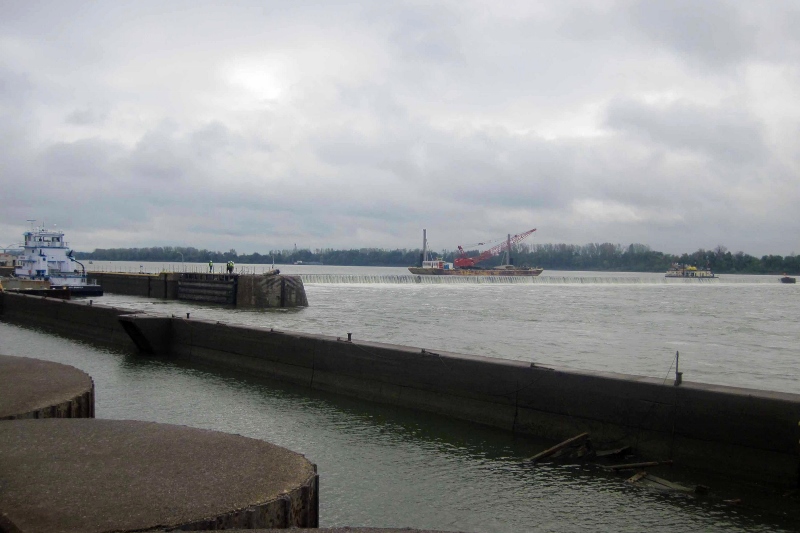A week-long navigation closure was ending Thursday at Locks and Dam 52 on the Ohio River, after a drop in river velocity enabled the Corps of Engineers to resume work on the installation’s 1928-built wicket dam.
Thirty tows were reported queued at the locks about 1.5 miles downstream of Brookport, Ill., where the massive Olmsted Locks and Dam project is scheduled to be complete and online in 2018.
The low lift wicket dam consists of 487 timber wicket gates across the river at mile marker 938.9. During periods of high water, navigation traffic transits over the lowered wicket gates. During low water, the gates must be raised individually to impound water, and create a navigable depth from Locks and Dam 52 to Smithland Locks and Dam, Kentucky Lake and Lake Barkley.
“We are going to be opening navigation this afternoon,” said Todd Hornback, a spokesman for the Corps’ Louisville District. Corps monitoring data showed 30 tows in queue since Sept. 6.
Work to fix the aging dam structure has been ongoing since the closure last week, he said.
Increasing velocities Sept. 7 stopped the Corps from raising enough dam wickets to hold pool at the locks. Velocities dropped overnight into Wednesday morning, and allowed dam raising to resume, Corps officials said.
“With the wickets we were able to raise this morning, we now have the dam in a workable configuration,” said Waylon Humphrey, deputy chief of operations with the Corp’s Louisville District.
With the work completed river elevation was expected to return to normal summer pool elevations by this weekend, reopening the river to barge operators and companies that rely on the Ohio for commodities delivery.
The unexpected drop in river velocity was “not something we could not have predicted,” said Louisville District Cmdr. Col. Antoinette Gant. “We take this as a positive and know there is still work to be done.”
Work is continuing to replace missing wickets and a rock dike built to protect working divers. That operation should not affect navigation, Corps officials said.
There was a similar one-week shutdown in September 2016, when the dam lost three wickets and others could not be raised due to river conditions. The dam is a relic of the 1920s river control system, with an adjacent 1,200’ lock that was built in the 1970s but only intended to last about 15 years.
The locks and dams and nearby Lock and Dam 53 are to be replaced by the Olmsted project – in the works since 1988, and at an estimated cost over $2.9 billion the biggest and most expensive Corps project ever on the inland rivers system.





